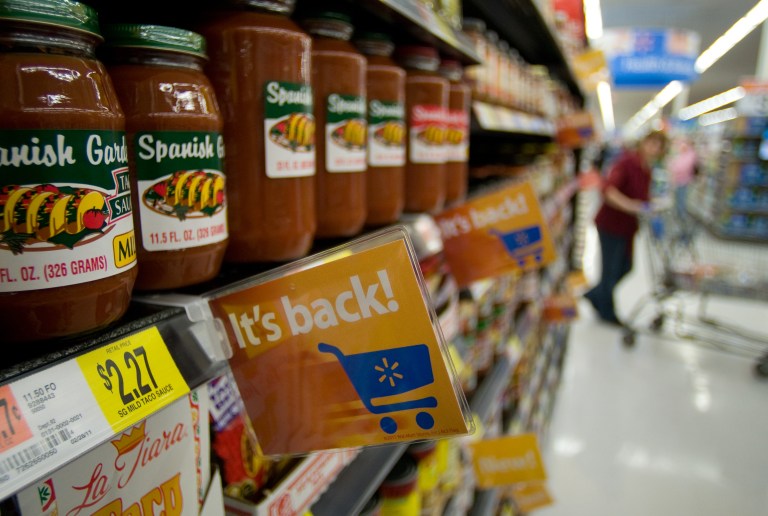Why Walmart Said No To Apple Pay

Given that Walmart’s own mobile payment plan—MCX, now branded as CurrentC—has no plans to go live nationally until next year, the world’s largest retail chain will not initially support Apple Pay, which is accepted to start accepting payments next month. But the anti-interchange mode of the MCX, which includes among its backers Target, 7-Eleven, Southwest Airlines, the Gap and Shell, means that shoppers will have to load the app either through cash payments made at a participating store or by giving the Walmart-lead effort direct access to the shopper’s bank account. In short, no credit or debit cards permitted, according to a report in The Washington Post.
“If broadly adopted, CurrentC could impose a radical change on the credit and debit card system. Customers can either load cash onto the app or allow the app to take funds directly out of a checking or savings account — it cannot be linked to a credit card yet. That means Wal-Mart and other retailers would avoid paying ‘swipe’ fees — the money merchants pay banks every time a shopper swipes a credit or debit card,” the story said. “The stores plan to use those savings to offer discounts to consumers who adopt the system. The network of retailers is also expected to cover the cost of fraudulent purchases, which generally are paid for by banks today.”
The timing is interesting, insofar as it gives Apple the full 2014 holiday shopping season to test its system and to generate a lot of media coverage doing so. That could fuel inevitability perceptions that would make it even more difficult for MCX to get massive consumer support.
There’s also the question of how much discounting Walmart could justify offering, especially given its relatively tight negotiated payment card fees. Whether that figure turns out to be, will it be enough of a discount to change the behavior of millions of U.S. shoppers?
MCX has a theoretical tactical advantage, in that it uses QR codes—which can be scanned by just about every smartphone—as opposed to NFC, which is what Apple Pay will use and which requires POS systems that support NFC and are NFC activated. The question there is how many consumers using those older smartphones are likely to make the move to in-store mobile commerce?
“Just because Apple is now responsible for us getting to this tipping point doesn’t mean Apple is necessarily going to win,” James Wester, research director of global payments at IDC Financial Insights, said, according to the Post story. “They’ve got a very cool solution that is very similar to the solution that other people have come out with, but Apple is really good at user experience and has loyal customers. That’s something you can’t discount.”
Added Michael Archer, a partner at retail consultancy Kurt Salmon Associates: “There will be a dominant player to come out of CurrentC versus Apple. I’m not willing to handicap either one right now. You’ve got major players in CurrentC. You’ve got eight of the top banks and credit card issuers in Apple Pay. The interest level in the space is always going to be challenged if there are competing players. The opportunity, and maybe a need, for convergence is there.”